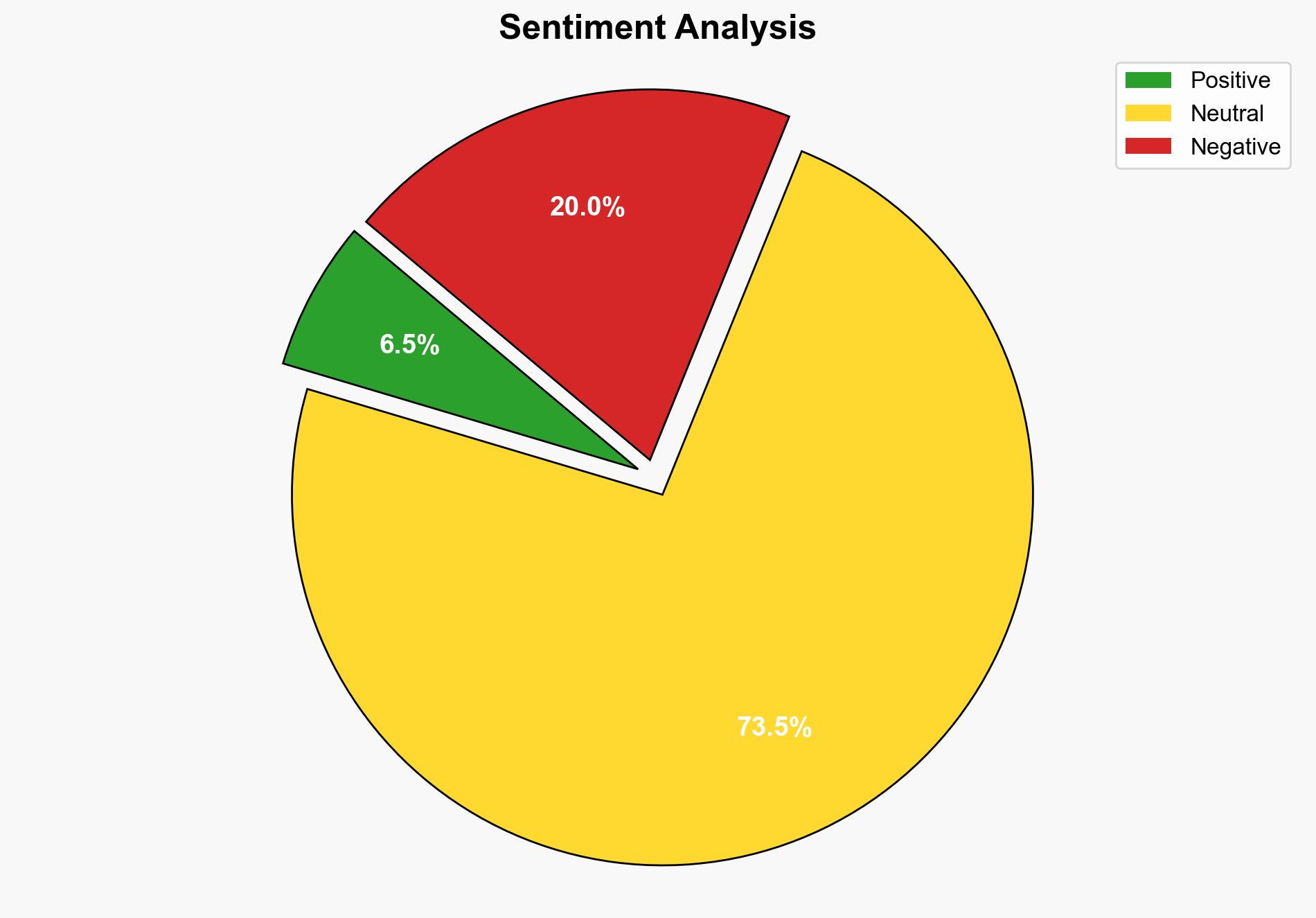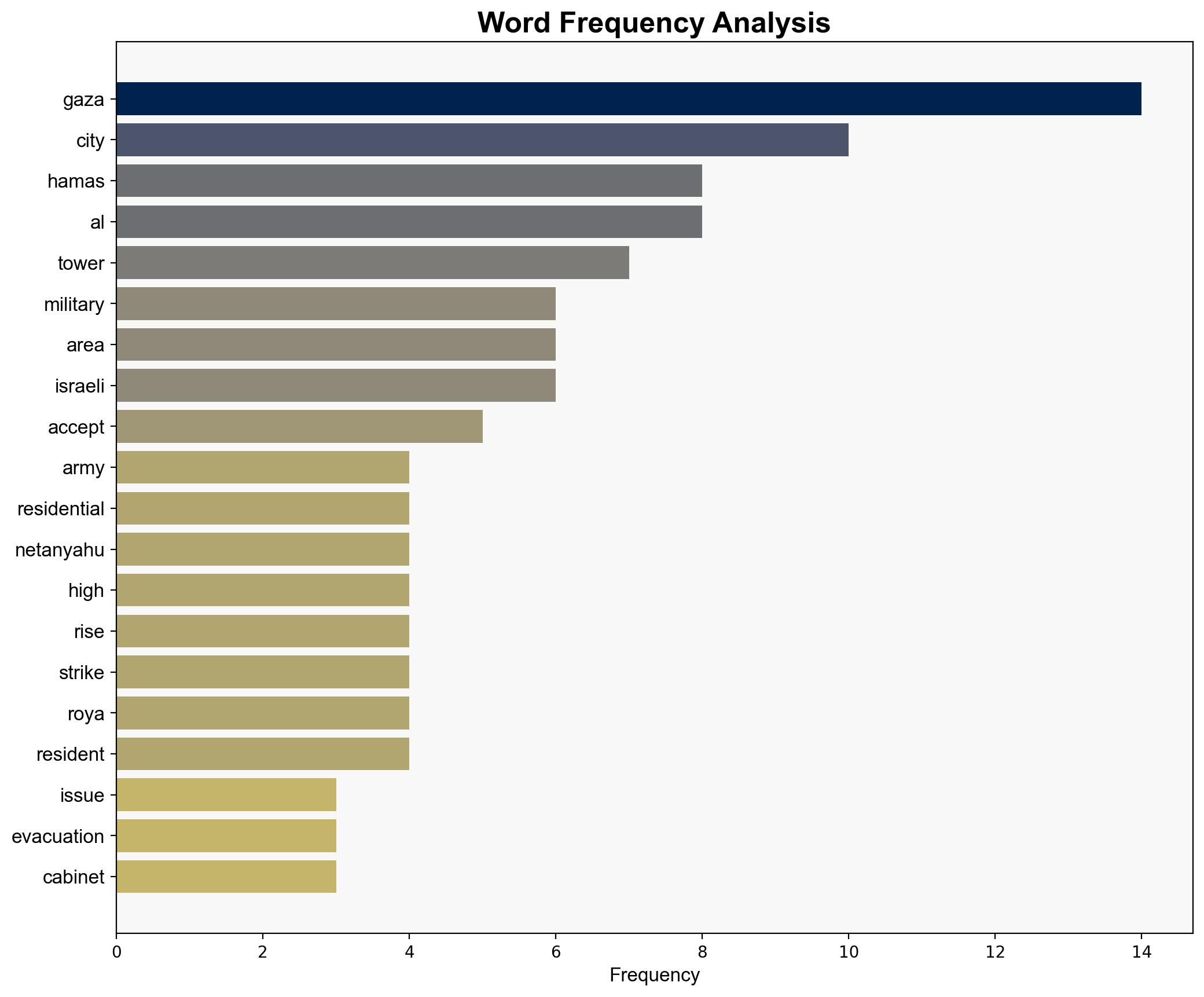Israel hits third Gaza City high-rise in as many days – RTE
Published on: 2025-09-07
Intelligence Report: Israel hits third Gaza City high-rise in as many days – RTE
1. BLUF (Bottom Line Up Front)
The most supported hypothesis suggests that Israel’s military actions are strategically aimed at dismantling Hamas infrastructure within Gaza City, despite the potential for significant humanitarian consequences. Confidence level: Moderate. Recommended action: Monitor developments closely and prepare for potential regional escalation.
2. Competing Hypotheses
Hypothesis 1: Israel’s strikes on high-rise buildings in Gaza City are primarily aimed at degrading Hamas’ operational capabilities by targeting infrastructure used for military purposes. This hypothesis is supported by Israel’s public statements and the strategic importance of disrupting Hamas’ command and control capabilities.
Hypothesis 2: The strikes are part of a broader psychological and political strategy to pressure Hamas into negotiations or concessions, using the destruction of civilian infrastructure to create internal dissent and weaken Hamas’ support base. This is suggested by the timing of the strikes and the issuance of evacuation orders, which may aim to create a humanitarian crisis to force international intervention.
3. Key Assumptions and Red Flags
– **Assumptions**: Hypothesis 1 assumes that the targeted buildings are indeed used for military purposes, as claimed by Israel. Hypothesis 2 assumes that the strikes will effectively pressure Hamas without backfiring by galvanizing support against Israel.
– **Red Flags**: Lack of independent verification of the military use of the targeted buildings. Potential bias in Israeli statements and the absence of Hamas’ strategic responses in the intelligence.
– **Blind Spots**: The humanitarian impact and its potential to alter regional alliances or provoke international condemnation are not fully explored.
4. Implications and Strategic Risks
The ongoing strikes could lead to a significant humanitarian crisis, potentially drawing international condemnation and altering regional alliances. There is a risk of escalation into a broader conflict if neighboring countries or non-state actors become involved. Economically, prolonged conflict could destabilize the region, affecting trade and investment. Psychologically, continued strikes may harden attitudes on both sides, reducing the likelihood of a negotiated settlement.
5. Recommendations and Outlook
- Engage in diplomatic efforts to de-escalate tensions and encourage dialogue between Israel and Hamas.
- Prepare for potential humanitarian assistance operations in Gaza to mitigate the impact on civilians.
- Scenario Projections:
- Best Case: A ceasefire is negotiated, allowing for humanitarian relief and reducing tensions.
- Worst Case: Escalation into a broader regional conflict involving multiple state and non-state actors.
- Most Likely: Continued strikes with intermittent international diplomatic interventions, maintaining a cycle of tension and temporary relief.
6. Key Individuals and Entities
– Benjamin Netanyahu
– Donald Trump
– Hamas
7. Thematic Tags
national security threats, counter-terrorism, regional focus, humanitarian crisis




